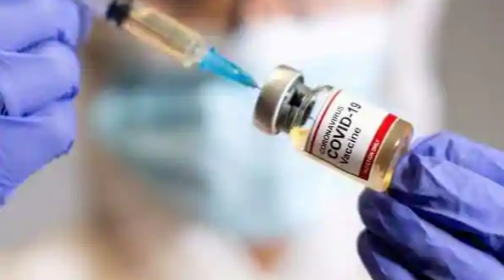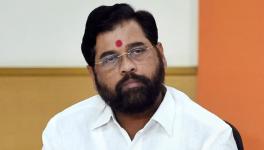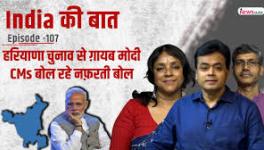India’s “Smart” Vaccine Campaign is Absolutely Dumb

Image Courtesy: Reuters
India’s Covid-19 curve seems to have flattened of late, though it is still up and down in some parts of the country. The caseload has increased to over 9.5 million and the number of fatalities is nearing 1.4 million. Nevertheless, India is still adding close to 40,000 infections every day, not to mention close to 550 deaths. It is perhaps the improvement in the situation that has emboldened the Union Ministry of Health to embark upon a new quixotic and dangerous course as far as its vaccination plans are concerned.
As recently as 29 October, Prime Minister Narendra Modi had said that all Indians would be vaccinated once vaccines became available. “I would like to assure the nation that, as and when a vaccine becomes available, everyone will be vaccinated. No one will be left behind,” he had said in an interview. “Of course, initially we may focus on protecting the most vulnerable and the front-line workers. A National Expert Group on Vaccine Administration for Covid-19 has been constituted to chart the way forward.”
That policy pronouncement is in line with global best practices. A World Health Organization (WHO) document says, for instance: “If safe and effective vaccines for COVID-19 are developed, WHO believes that everyone, everywhere who could benefit from these vaccines should have access as quickly as possible, starting with those at highest risk.”
It has, however, been reported now that health officials have conceived a programme which has given short shrift to the idea of universal immunization. They propose a “smart vaccination” campaign to stop the pandemic by vaccinating select groups while leaving the preponderant majority of Indians unvaccinated. Really smart, huh?
Well, the plan works on the assumption that the population can be divided into three groups: core, bridge and secondary. The first consists of healthcare and other front-line workers, and the vulnerable. The plan assumes that after the core group is vaccinated, “there is least chance of spread of the disease and there would not be a requirement for vaccinating whole population”, says a parliamentary panel report citing Balram Bhargava, director general of the Indian Council for Medical Research.
Earlier, in July, the Centre had indicated that front-line workers would receive the vaccine on a priority basis—a no-brainer. In a November interview, Union Minister for Health Harsh Vardhan had said that the government hoped to vaccinate about 30 crore people by August-September 2021. It appears that these will be front-line workers and the vulnerable. In other words, according to the “smart” campaign, only about 22% of Indians will be vaccinated. Since the numbers are necessarily vague—for instance, it is practically impossible to compute exactly how many medically “vulnerable” people there are in the country—let us assume that ultimately around 30% of people will be vaccinated in this country.
The flaws in this plan are so mammoth that it is difficult to find a starting point for a critique. So, let us begin with a minor logistical problem. How does the state go about locating “vulnerable” people, those, in other words, who have underlying conditions—respiratory illnesses, cardiac problems and diabetes. Will the state go to them or will they have to go to the state? Then, of course, there are the 100 million or 10 crore elderly, who are vulnerable by that very reason. How do they come into the “smart” campaign? The beauty of the universal unsmart campaign is that it takes care of everyone, without apathetic officials having to go out hunting for needles in haystacks.
But there are other objections as well, which experts are worrying about. The assumptions behind this campaign, they say, are not aligned to the tenets of epidemiology, virology and public health. The main problem is that the current level of scientific knowledge about this coronavirus and the ways it is transmitted makes leaving huge numbers of people behind a risky strategy. It does not justify classifying some groups as being less vulnerable to infection.
Experts say there isn’t enough evidence from epidemiology or the degree of surveillance carried out in the country so far to make the kind of classifications sought to be made. One microbiologist says that we still do not know who transmits how much. Without that “high-granularity” information it is difficult to say who should be in the core group. To this we may add that we still do not know how long the antibodies in an infected person lasts and, therefore, how long he or she remains safe.
In other words, the assumption that vaccinating front-line workers and the vulnerable will create a shield that will serve to block transmission, rather than just protect those most in need of protection, is not necessarily right.
What follows from this new strategy are the plans in respect of pre-ordering and building up a stock of vaccines. The evidence here seems to be contradictory. On 3 December, it was reported that unlike the United States, United Kingdom and the European Union, which had already placed orders for the Pfizer vaccine, which will roll out the soonest, India had not. It was also reported that India was pinning its hopes on the Oxford-AstraZeneca vaccine alongside some Indian vaccines, especially the one being developed by Bharat Biotech. It is not known at the moment when these will debut.
On 4 December, however, it was reported that a study by Duke University had found that with 1.6 billion doses, India was leading the world in vaccine deals, followed by the EU with 1.58. India’s deals were with AstraZeneca (500 million), Gamaleya (100 million) and Novavax (1 billion). Novavax is based in the United States, while Gamaleya is based in Russia. It is not yet known when the Novavax and Gamaleya vaccines will roll out, though the Oxford vaccine is on the cusp.
Regardless of that, the big question is if India is already in deals for 1.6 billion—or 160 crore—vaccine doses why is it thinking of vaccinating only around 30 crore people. Assuming that all vaccines need to be administered twice (like Pfizer’s), the numbers India is dealing with could vaccinate up to 80 crore people. As in all matters, we have a government that works incompetently wrapped in opacity, often with several sets of people doing their own thing oblivious to what the others are up to.
Be that as it may, whatever decision is taken must be taken in the light of the current situation. Though the curve is not exponential, there is no room for self-congratulation. These numbers could well spike, especially as the winter deepens over northern India in the next few months; and as air quality plummets across the region. Delhi, for instance, seems now to be on a roller-coaster.
Given our vast ignorance of the virus, the methods of its transmissions and, certainly, how things are going to play out in the months ahead, any government that even pretends to be a government must proceed on the basis of utmost caution. In other words maximal coverage, rather than penny-pinching.
The author is a freelance journalist and researcher. The views are personal.
Get the latest reports & analysis with people's perspective on Protests, movements & deep analytical videos, discussions of the current affairs in your Telegram app. Subscribe to NewsClick's Telegram channel & get Real-Time updates on stories, as they get published on our website.
























